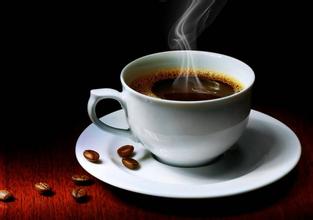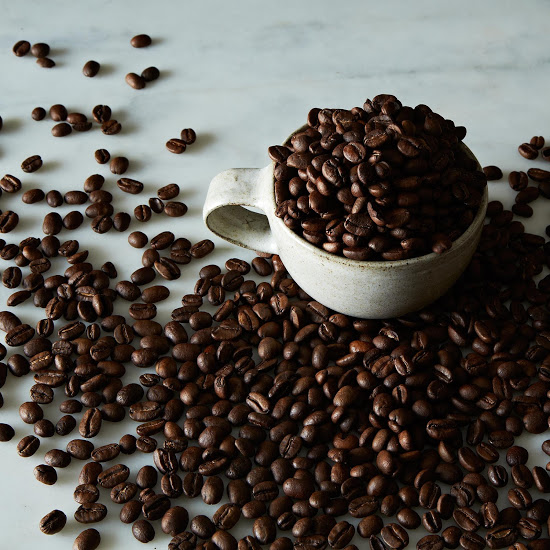How to use SCAA Cup Test Table SCAA Flavor Wheel Cup Test Table Coffee Cup Test significance and Operation

Coffee Cupping, translated into Chinese for coffee cup test, cup taste or cup evaluation, is a very magical and simple method of coffee sensory evaluation. The quality of coffee is judged by the sense of taste, which is called "coffee cup test". The person who evaluates it is called a "coffee quality appraiser". Similar to wine tasting, when testing the cup, make the coffee flow back and forth in the mouth and make full use of your sense of taste and smell to feel the flavor characteristics of the coffee. It transforms the subjective and different sensory experience into quantitative data with practical value to guide people's practical decisions, such as buying, selling, sharing experience and so on. Let me tell you a little bit about each item in SCAA's cup test table.
First: Fragrance/Aroma aroma: the aroma consists of two parts, dry incense and wet fragrance. After grinding the beans, the first image and the first item to be scored is the dry fragrance, the aroma of coffee flowers, roasted hazelnuts and roasted almonds are all pleasant aromas. Water injection, the broken shell of the wet fragrance gives people more fantasy, honey, lemon, apricot fruit make people salivating.
The second scoring item: Flavor sipping Flavor: flavor is the first item to be perceived and scored when the coffee liquid drops to 71 ℃ and starts sipping, including various flavors and the sense of smell behind the nose; cup testers can include the tastes they feel in the scoring items, including the various flavors measured or drunk. It can be said that sipping flavor is a very important scoring item, and it is also a basis for testing the characteristics of a cup of coffee sample. The more the better, the higher the score.
The third score item: After-taste afterrhyme: all kinds of taste or aroma or touch that still stay in the mouth after sipping, and the good flavor stays in the mouth for a long time, such as sweetness, if it stays clearly in the mouth or even spreads after sipping and spitting coffee, then the score of this item will be high, on the contrary, if there is no aftertaste, or very short, the score will be low.
The fourth score item: Acidity acidity: good acidity is not like vinegar, which is bright and lively and can also detect many kinds of acidity such as citrus, berries or sweet lemons, as well as the sweet and sour melons like cantaloupe or the crisp acidity of freshly ripe apples. The above acids are of high quality; bad acids are like unripe fruit or acetic acid, and some bad acids are like overripe fruit or rotten fruit, and fermented acid or rotten acid can be detected. The higher the quality, the higher the acid score.
The fifth score item: Body alcohol thickness: the score item is not to measure the taste, this belongs to the substance and touch sensation of the mouth, grease, viscosity, texture, etc. all constitute the body;, such as milk and water, the former has a much higher sense of touch, thick soup and clear soup, the consistency and touch of the former are much higher than the latter.
Sixth: Uniformity consistency: this score is relatively simple, 5 cup samples have a different taste, which cup has defects? If all are consistent, then write a big 10 points!
The seventh scoring item: Balance balance: refers to whether each scoring item of coffee is balanced, for example, the acid is bright but still turns sweet? The touch is sticky but not astringent? Whether the various flavors of coffee are harmonious: if so. Then the score of this item will be high.
The eighth score item: Cleancup cleanliness: high-quality products are very important and necessary conditions, the so-called cleanliness is the defective taste without defects and stains (complete ·freedom from ·taints ·or ·faults), coffee is rotten, soil taste, medicine iodine taste, fermented acid, rubber, onions, astringency and other bad taste and touch all indicate that they are not clean enough.
The ninth score item: Sweetness sweetness: not only represents the coffee fruit harvested in the best ripening period, not mixed with unripe beans, but also represents the excellent quality of coffee. Only by selecting freshly ripe coffee fruits to process into raw beans can you get better sweetness, and there are many kinds of sweetness, such as sugarcane sweetness, caramel sweetness and so on, which can be noted in the evaluation. Coffee usually has sweetness, so this item will give a high score as long as it is perceived to be sweet.
Tenth score item: Overall overall evaluation: coffee as a whole is excellent, attractive to you, or average, or do you not like her at all? This scoring item is the overall evaluation of the tester, and it can also reflect his personal preferences. If there is no cup tester to test each type of coffee, there will be no harvest from coffee farmers, and there will be no refreshing drinks in the cup. the true meaning of cup testing is to find better coffee.

(article / boutique Coffee Learning Wechat official account)
Source: platinum Coffee College
Important Notice :
前街咖啡 FrontStreet Coffee has moved to new addredd:
FrontStreet Coffee Address: 315,Donghua East Road,GuangZhou
Tel:020 38364473
- Prev

What is mixed coffee? Famous coffee brands Italian mixed coffee beans espresso concentrate
Mixed coffee is also called blended coffee. Nowadays, almost all the popular Italian coffee belongs to the category of mixed coffee. We generally mix two or more different varieties of coffee or the same variety of coffee with different roasting degrees, which is called mixed coffee. Mixed coffee is by no means a simple addition, but in the hope that the blender will be unique in coffee flavor.
- Next

Where are most of the aromas of coffee beans concentrated? Espresso roasted coffee beans espresso
Most of the aromas of coffee beans are concentrated in two kinds of oils. Follow the editor to learn more about them. Let's first take a look at what lipids are, that is, aromatic oil concentrates, also known as lipids, generally refer to fats, oils, and waxes. Most of the coffee bean oil is stored in the bean embryo, and only a very small part is covered on the bean surface in the form of wax. Arabica's lipids account for about 1517% of the bean weight, which is better than Rob.
Related
- What is the meaning of lactic acid fermentation with coffee bean treatment?
- How to judge the state of foam by sound?
- How does the latte pull out the unicorn pattern? Come to get for a little trick to improve the flower pull!
- Will flower pulling affect the taste of the latte?
- Do you know the history of coffee?
- The difference between honey treatment and sun washing what is raisin honey treatment?
- What kind of milk can a novice use to make coffee foam to keep the foam longer? The correct method and skills of milking tutorial sharing
- Why do washed coffee beans taste sour? Flavor characteristics of washed Coffee
- Introduction to the skill of how to practice the size and height of water injection around the circle of hand-brewed coffee
- How do beginners practice coffee flower drawing from scratch?

